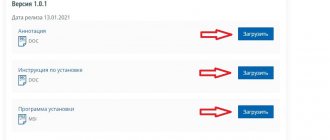Home / Complaints, courts, consumer rights
Back
Published: September 22, 2018
Reading time: 8 min
0
912
When wanting to purchase a certain product or service, the buyer often agrees to one of the seller’s conditions: to pay a certain amount, part of its cost or the full cost, called an advance payment (deposit). But often, for a number of reasons, the buyer decides to refuse to purchase a product for which part of the money has already been paid.
- Types of prepayment
- Is it possible to return the prepayment?
- When is it not possible to return the prepayment?
- How to return the prepayment?
- The procedure for filing a claim for a refund of prepayment
In this case, the question arises: is it possible to return the prepayment and how to do this?
Types of prepayment
The terms of the concluded agreement for the provision of services or the purchase and sale of goods determine the types of prepayment, of which there are three:
- execution of an agreement valid for a certain time , during which the amount is paid in installments;
- contribution of a portion of the amount (a certain percentage of the price);
- payment of the full price (in this case, the buyer, due to certain circumstances, can pick up the product or service from the seller after some time).
The buyer should distinguish between the concepts of “advance” and “deposit”. An advance does not require documentation, unlike a deposit, which has legal force, since it is a guarantor of the transaction.
The buyer has the right to demand a refund of the advance payment if he decides to refuse to purchase a product or service. The seller does not have the right to refuse to return the advance payment, but is obliged to do this within the time limits established by the legislation of the Russian Federation.
Tax accounting: what to pay attention to
When working with advance payments, you must be careful when filling out invoices. Tax authorities, in particular, pay attention to the correct indication of the tax rate - 10/110 or 20/120, and not 10% and 20%. When making advance payments, VAT calculations are carried out only at estimated rates.
When registering an invoice for an advance payment in the purchase book in case of a return, the seller uses transaction type code 22 (List of codes for transaction types indicated in the purchase book, attached to the Federal Tax Service order No. ММВ-7-3 / [email protected] dated 14/03 /16).
The details of the invoice for the advance payment, a document confirming the return of money to the buyer - usually a payment order (column 7, see letter of the Ministry of Finance No. 03-07-11/16044 dated 24/03/15) are also indicated. In the relevant In the columns you need to indicate the name of your company, INN, KPP, the full amount of the advance, VAT on the advance is only deductible. The tax must correspond to the refund amount (column 16).
The buyer in the same situation is obliged to restore the tax by reflecting the seller’s invoice for the advance payment in the sales book (it was already reflected in the purchase book). Operation type code 21 is used (Federal Tax Service order No. ММВ-7-3/136, appendix).
Is it possible to return the prepayment?
At the request of the buyer, the seller is obliged to return the prepayment in full - this is stipulated in the Law on the Protection of Consumer Rights of the Russian Federation. A refund of the money paid is possible if the concluded agreement did not include a condition on non-return of the deposit.
Returns are made in two ways:
- drawing up and submitting an application for return of the deposit (prepayment);
- termination of a concluded sales contract or service contract.
If the seller refuses to return the advance payment, the buyer has the right to file a complaint with the authorized bodies (department for consumer protection, prosecutor's office, etc.).
Most often, the buyer demands a refund of the amount paid in case of obvious violations on the part of the seller, namely:
- failure to comply with the date of provision of goods or services;
- providing the buyer with another product that does not correspond to the one for which the deposit was made;
- The product presented does not match the quality.
As practice shows, the vast majority of sellers satisfy the claims made by buyers, as they value their reputation. Therefore, problems with the return of the prepayment amount usually do not arise.
Use of cash register systems when crediting advance payments and prepayments at an online cash register
The second check will need to be issued when the buyer has received what he paid for in advance. Here you also need to use the “calculation method attribute” attribute.
Important! When registering an advance or prepayment at an online checkout, you should always indicate “full payment” in the “payment method indication” column. Otherwise, if the final payment amount differs from the preliminary payment, problems will arise with making additional payments in other ways.
Further, in the settlement amount for the check, it is indicated that the payment was not made in cash or non-cash, but by offsetting an advance (prepayment). When you issue a check, the online cash register will understand that you need to write off the prepayment made to it for the completed shipment.
When is it not possible to return the prepayment?
In some cases, it is impossible to return the money paid. These include the following:
- service order . In this case, the prepayment is withheld to cover the company’s costs (payment of employees, purchase of tools and materials, transportation);
- ordering goods with delivery from the store . In this case, an advance payment is also withheld to cover transportation costs, as well as payment for the work of the employees who carried out the transportation. The buyer must be warned about this in advance by the employees of the outlet;
- if there is a non-refundable prepayment clause in the contract . If an agreement is concluded for the provision of services or the purchase and sale of goods, then the agreement may contain a clause under which the paid deposit remains with the seller if the buyer refuses to purchase the product or service.
In all other cases, the buyer has the right to demand the return of his own funds left as an advance to the seller.
Use cash register when crediting and returning an advance
From 07/01/2019, those who are required to use online cash registers must punch checks for offset and return of advances to cash registers.
Previously, the Federal Tax Service developed detailed guidelines for issuing checks for different forms of advance:
- generation of checks for prepayment for own goods, offset of prepayment, provision of a loan to pay for goods and when repaying a loan to pay for goods (letter of the Federal Tax Service of the Russian Federation dated February 20, 2019 No. ED-4-20 / [email protected] );
- generation of receipts for the sale of goods using a gift card (letter of the Federal Tax Service 07/03/2018 No. ED-4-20 / [email protected] ).
In this material we will not dwell in detail on the general rules for making advances at the online cash register. Let's pay attention to technical aspects.
Let us only remind you that if the buyer did not receive the goods (service) at the time of payment, then both facts must be recorded: separate receipts must be issued for both the delivery of the goods (service) and for payment. This rule applies to any sales and forms of payment, including online.
Having received an advance payment from the buyer, do not forget to calculate and pay VAT. ConsultantPlus experts explained in detail how to do this correctly. Get trial access to the K+ system and upgrade to the Ready Solution for free.
How to return the prepayment?
In order to return funds paid as an advance for a product or service, the buyer should follow the following procedure:
- Review the concluded purchase and sale agreement (service agreement). The contract should not contain the clause “Withholding the advance payment in the event of the buyer’s refusal of the product or service.”
- Contact the seller in one of the convenient ways (by phone, via the Internet or in person) and inform him of your refusal. In this case, you must provide a specific reason for the refusal.
- Write an application for a refund , if such a procedure is provided.
- Wait 10 days for the seller to make a decision.
- Receive funds in one of the convenient ways specified in the return application.
If the seller does not make concessions or simply ignores the request, you should proceed as follows:
- Drawing up a claim (in 2 copies). The document must indicate the fact of contacting the seller with a return request.
- Hand over the claim personally to an employee of the trading company . In this case, the claim must be registered by this employee as an incoming document. The claim can also be sent by registered mail with acknowledgment of receipt.
- Wait within 10 days from the date of registration of the application or its delivery by the postman. After the set time has expired (10 days), if the seller ignores the submitted claim, then there is only one way out - going to court.
If the amount of the claim against the seller is less than 50,000 rubles, then the statement of claim is filed with the World Court at the location of the outlet. Claims with an amount of more than 50,000 rubles are considered by courts of general jurisdiction.
Typically, retail outlets make contact with buyers and return the prepayment, since the courts, as a rule, take the side of the buyers and oblige sellers not only to return the money to the buyer, but also to compensate him for moral damages, as well as the costs of the trial.
The buyer must have a contract for the provision of services or a purchase and sale drawn up and signed by both parties. Such a document is the basis for consideration of the case in court.
In its absence (with a verbal agreement between the seller and the buyer), returning the amount paid will be problematic and, most likely, impossible.
What documents are needed
To receive money, you only need to make a claim; it is not necessary to provide any additional papers, for example, a copy of the contract or payment documents confirming the fact of the prepayment - the contractor already has these papers and information.
At the same time, if the service is not provided, how to return the money and not spend several months on proceedings? It is reasonable to attach to the claim copies of documents confirming the customer’s position, in particular a document confirming that the advance payment has been transferred. In this case, you should not send the originals - limit yourself to a copy.
How does a pledge differ from an advance and a deposit and how is it regulated by law?
Natalya Tikhonenko, executive director of financial service QOOD
The pledge itself does not confirm the reality of the transaction. The collateral can be used to secure obligations that will arise in the future. An example is the conclusion of a credit line agreement or an agreement to provide funds in an overdraft mode. In this case, at the time of concluding the collateral agreement, there is no actual execution of the transaction yet (consensual transaction), but the security already exists.
The law establishes completely different procedures for disputes in the case of the use of collateral and deposit if one of the parties to the transaction has not fulfilled its obligations. When using collateral, the injured party can receive payment or compensation for their costs through the sale of the collateral or keep it for themselves. These procedures are not required for the deposit.
The collateral is property or claims, but not money. Similar rules are only the provisions on the pledge of rights under a bank account agreement, established by Art. 358.9-358.14 Civil Code of the Russian Federation.








